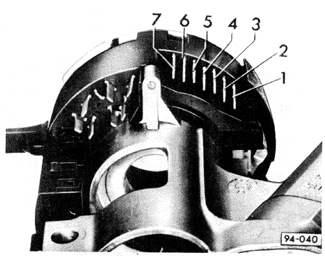10.1 Troubleshooting Exterior LightsMost of the exterior lighting involves pairs of lights, and this fact is an aid to troubleshooting. If only one of a pair of lights is out-one taillight for example-then the problem is most likely due to a failed bulb or some other problem with that particular light socket or its wiring. A simple test is to exchange the bulb with its counterpart which is known to be good. If the same bulb fails to light in a new location, then the bulb is faulty and should be replaced. If the same light fails to light with the other bulb, then the problem is in the socket or wiring. Many lighting problems are due to dirty or corroded sockets, or loosely-fitting bulb contacts or connectors. Check that voltage is reaching the bulb and that the socket has a good connection to ground. If a pair of bulbs are both out-both taillights for example- then the problem is most likely in some part of the system which is common to both lights. Begin by checking for a failed fuse. Test switches using simple continuity checks made with an ohmmeter. Check the switch connectors for voltage and continuity to ground. Fig. 10-1 gives terminal locations for steering-column mounted switches on Jetta models from late 1989 and Golf and GTI models from 1990. The location of terminals for Jetta models up to late 1989, and for 1985 through 1989 Golf and GTI models is shown earlier in Fig. 9-1.


|